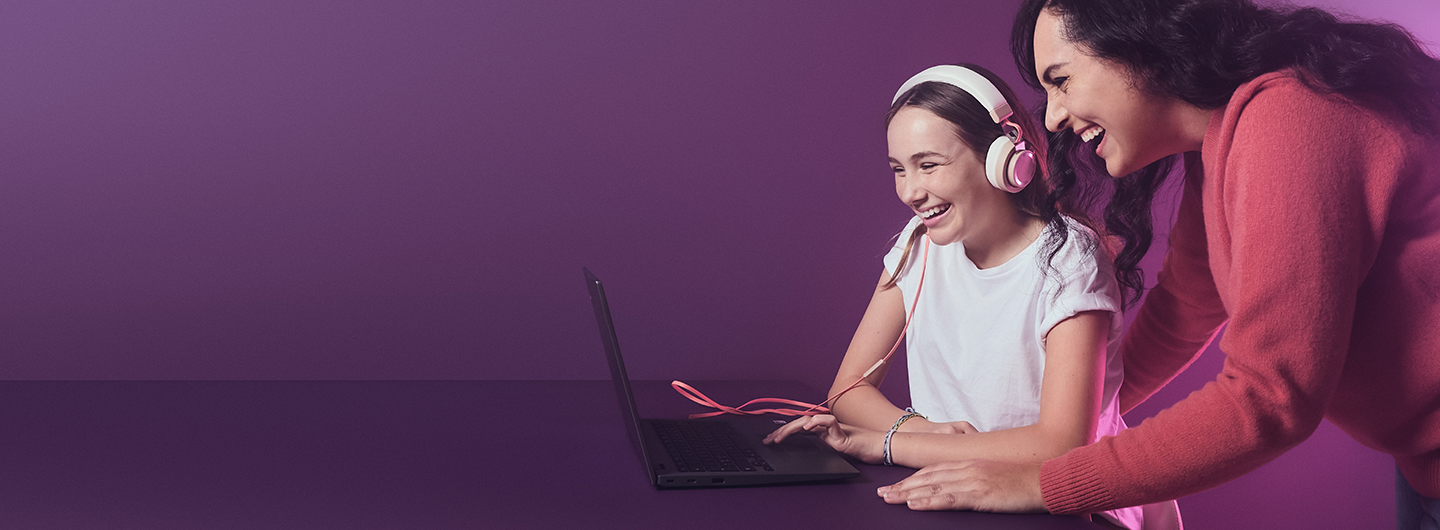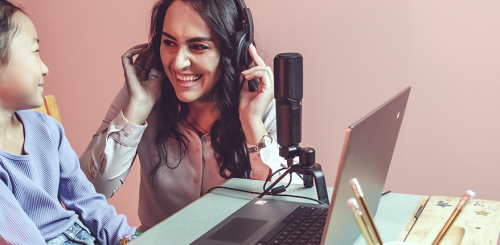
Build a Modern Music Program With Sample Packs and Audio Clips
September 30, 2022As a music teacher, you may be accustomed to the traditional makeup of a music program, where instruments, band practice, and music theory are the norm. However, with the increased need for remote learning and the increasingly non-traditional methods of music-making gaining popularity, consider how sound packs and audio clips can help you better connect with your students.
In recent years, digital audio workstations — or DAWs, for short — gained popularity in schools across the country. From helping students learn how to collaborate on music during the pandemic to teaching them a lesson in mathematics through melodies, DAWs are central to the future of building a holistic education in any music program.
Since DAWs are used in almost every audio and video processing system today, teaching students how to use DAWs can be a beneficial life skill with real-world application later in life. And as music programs are being cut in schools across the country, ensuring accessibility to sample packs and audio clips can help to foster the interest in music among these students while remaining within already tight budgetary constraints for a childhood music program. But what are sample packs, exactly, and how do they relate to your music curriculum?
The Importance of Sample Packs in Music
What Are Sample Packs?
Sample packs are a collection of sounds used as building blocks for music makers to create their own unique songs. These sounds can be individual without breaks in audio, like in a music loop. Also, they can be one-shot samples that are triggered to add an effect and resonance within the music itself.
Creating samples packs is relatively easy and can be found throughout the web. Each sample pack ranges in quality, depending on the source of the sample and the intent of the purchase. Sample packs comprise of folders of sound files that fall under a common theme.
Quick History of Sample Packs
Digital technology started gaining popularity toward the end of the 1970s. However, during this time, it became extremely expensive for less-known music genres, like hip hop, to access the technological advancements made inside studios.
It wasn’t until the 1980s that real advancements in sampling began to take hold, with hip hop leading the charge. Sampling technology helped artists evolve beyond their traditional sound, which was often narrow and limited to certain instruments or effects. Studios used sampling to help artists give their music a new range.
In the 2000s, sampling, and sample packs at large, grew parallel to the emergence of the desktop computer. Since then, sample packs became the norm for artists regardless of genre, allowing them to make their music more dynamic and experiment with new sounds.
Although samples range in type, the term sample usually refers to short audio fragments, like:
- Short percussive instrument sounds (drums, synthesizers, bells, electric drums, etc.)
- Loops (drum patterns, melodies, or beats)
- Noises from nature or the everyday world
- Effects (synth sounds, manipulated tones, etc.)
If you aren’t sure if you’ve heard sampling in music before, modern pop music features many prominent examples. For instance, notable songs use samples including, “Touch the Sky” by Kanye West, “Truth Hurts” by Lizzo, “Umbrella” by Rihanna, and “All by Myself” by Celine Dion and Eric Carmen.
Why Are Sample Packs Important in a Music Program?
Sample packs are extremely important for educators. They give music teachers a point from which to begin. When teaching students about music theory or the history of music, a sample pack allows teachers to deconstruct how an artist first developed a track. Additionally, students can understand how that sample was utilized to create a more complete and satisfying song.
Students can use sample packs in much the same way. As a teacher, you may not have the bandwidth to help your students integrate each individual instrument into their finished sound. However, through sharing examples of artists who used sample packs to create their own music, encouraging students to experiment with their own combination of sounds becomes easier. This leads to a much more intuitive and foundational relationship between students and music theory inside of the music program.
With this in mind, the quality of the sample packs that you give to your students is also important. Unfortunately, some DAWs lack variety or quality control, which limits creativity. That’s why Soundtrap for Education offers over 22,000 loops to help your students choose the perfect sample packs for the music they want to create.
Additionally, the Soundtrap Studio comes equipped with the Patterns Drum Maker so that students can explore more control over their projects. With Patterns, helping students go from creating a beat to adding a sample pack and finally creating a full-length song becomes easy. Students add virtual instrumentation or bring real instruments to their mix when creating a song. Adding instruments helps them understand the DAW while appreciating the value of physical instruments. Finally, they can bring extra personality to their project through the incorporation of unique audio clips.
The Importance of Audio Clips in Modern Music
What Are Audio Clips?
Audio clips evolved from samples. Made from a few samples or an entire track, audio clips help elevate an artist’s music by inserting outside instruments or vocals to add to the existing mix. This could be a melody repurposed from another track or a chunk of dialogue from a movie or TV show. For example, think of the chorus used in Kanye West’s “Diamonds from Sierra Leone.” The chorus was taken from Shirley Bassey’s title tune to the 1971 James Bond film “Diamonds Are Forever.” Incorporating a recognizable song in a new way gave the track an exciting mix of freshness and familiarity.
Note that an audio clip is not the same as clipping audio. Clipping audio changes an audio signal and damages an amplifier when it is overdriven beyond the capabilities of its output voltage. Clipping produces strong harmonic distortion within the wavelength and can ruin a song. In contrast, adding an audio clip to a mix is meant to improve the existing tracks in a song.
Brief History of Audio Clips
The terms “audio clips” and “samples” are often used interchangeably, but they aren’t quite the same. An audio clip can be a collection of samples, but samples are not collections of audio clips. Featured artists in songs today most clearly parallel audio clips of the past. When adding a feature, artists will include an interlude from another musician to create contrast and add dimension to the existing song.
Hip hop, the pioneer of many modern music integrations, helped to popularize the use of collaborative audio clips with popular songs like Dr. Dre’s “The Chronic” in 1990. The album featured an appearance by then-newcomer Snoop Dogg and helped to launch his career. However, even before that, features were utilized by artists like Grandmaster Flash, Glenn Miedorsos, and RUN-DMC in the 1980s.
Why Are Audio Clips Important in a Music Program?
Audio clips teach students the importance of collaboration and are important educational tools. Students can think about ways to build their song around an existing clip or ask classmates record a special audio clip specifically to be featured in the project. Sound packs provide a great first step in learning how to use the DAW. However, learning how to collaborate with others through audio clips is a lifelong skill that applies in many different situations. For a music program, audio clips give students a stepping stone to learning and collaboration.
Collaboration needs to be a tenet in every music program, and bands and orchestras often focus on collaboration. But it becomes difficult for students to grasp the importance of teamwork if they’re hyper-focused on their own sound or performance. Fortunately, certain DAWs, like Soundtrap for Education, makes collaboration easy in a music program.
In the Soundtrap Studio, students collaborate with each other from anywhere in the world. They edit songs in real-time and add audio clips that work best for their projects. While they work together, students and teachers never worry about losing their audio clips. Final mixes and audio clips are stored on the cloud through the studio’s auto-save feature.
Why Soundtrap For Education?
Soundtrap for Education provides the ultimate audio production platform for students and teachers to create and edit audio recordings. This innovative platform educates users with automatic transcription tools, interactive editing, and the ability to upload projects directly to Spotify. Students and teachers easily tap into their artistic side with this intuitive audio platform. By doing so, teachers facilitate a creative learning environment regardless of the student’s age or experience level.
With Soundtrap for Education, students and teachers collaborate through advanced cloud technology at any time or place. In addition, the platform comes equipped with a robust resource portal. The resource portal contains tutorials, an external curriculum, and lesson plans to complete the educational experience. Finally, teachers ensure that student collaboration is safe and secure with invite-only groups in Soundtrap.
 EDU Portal
EDU Portal


